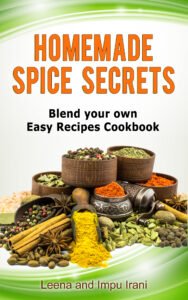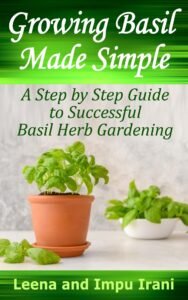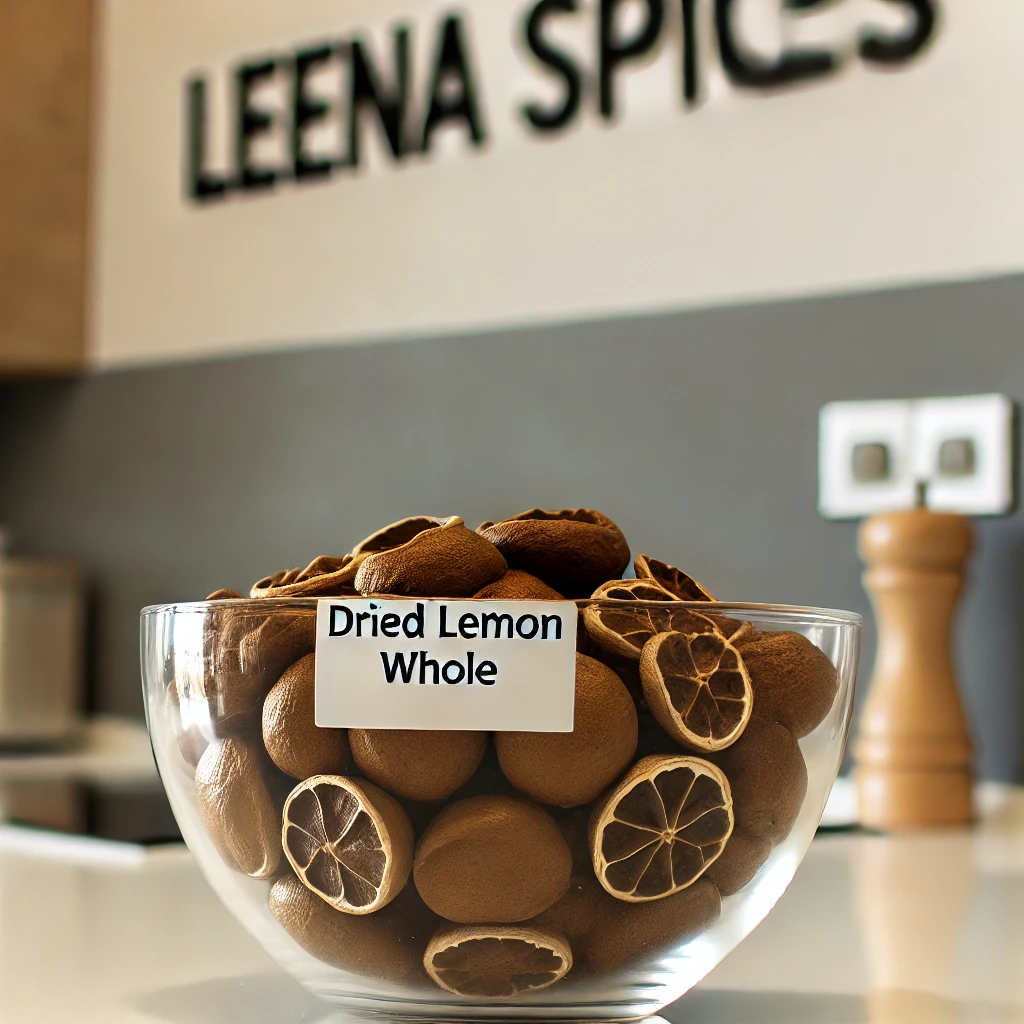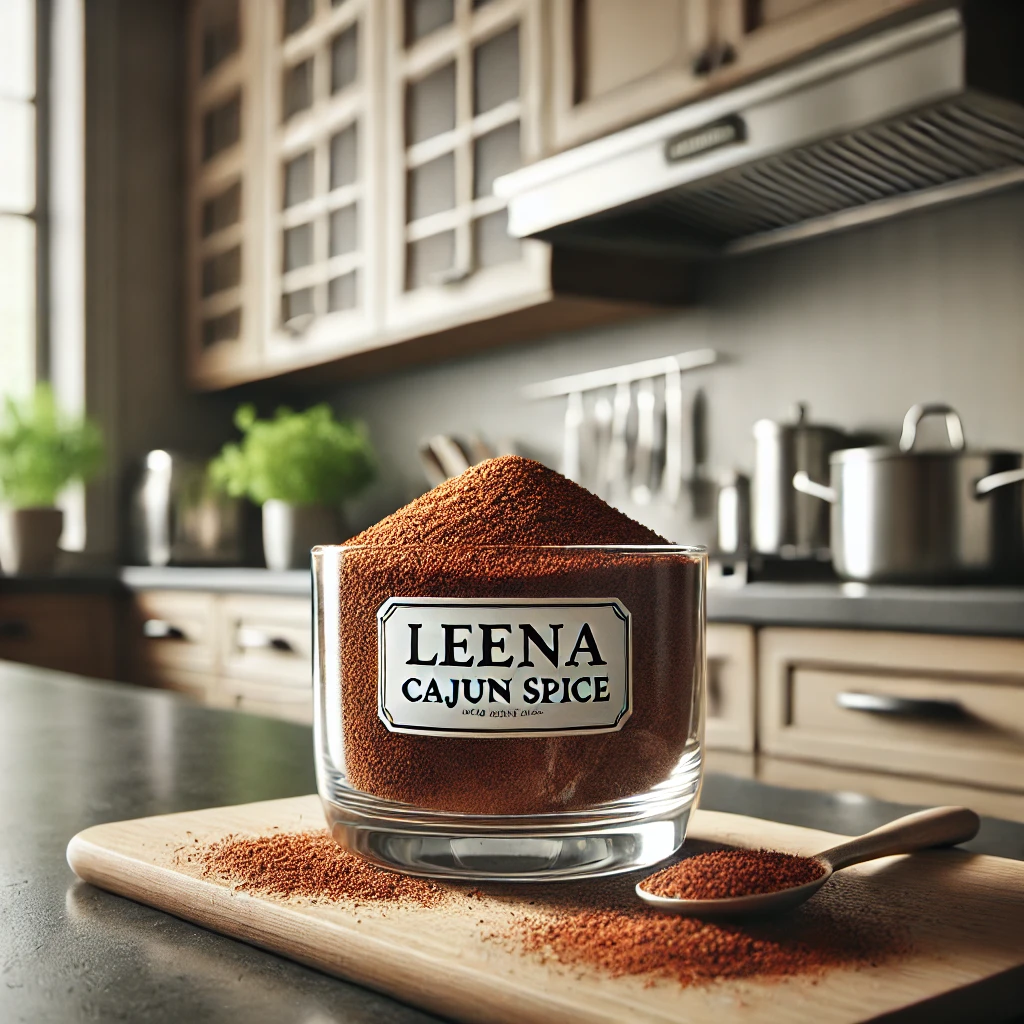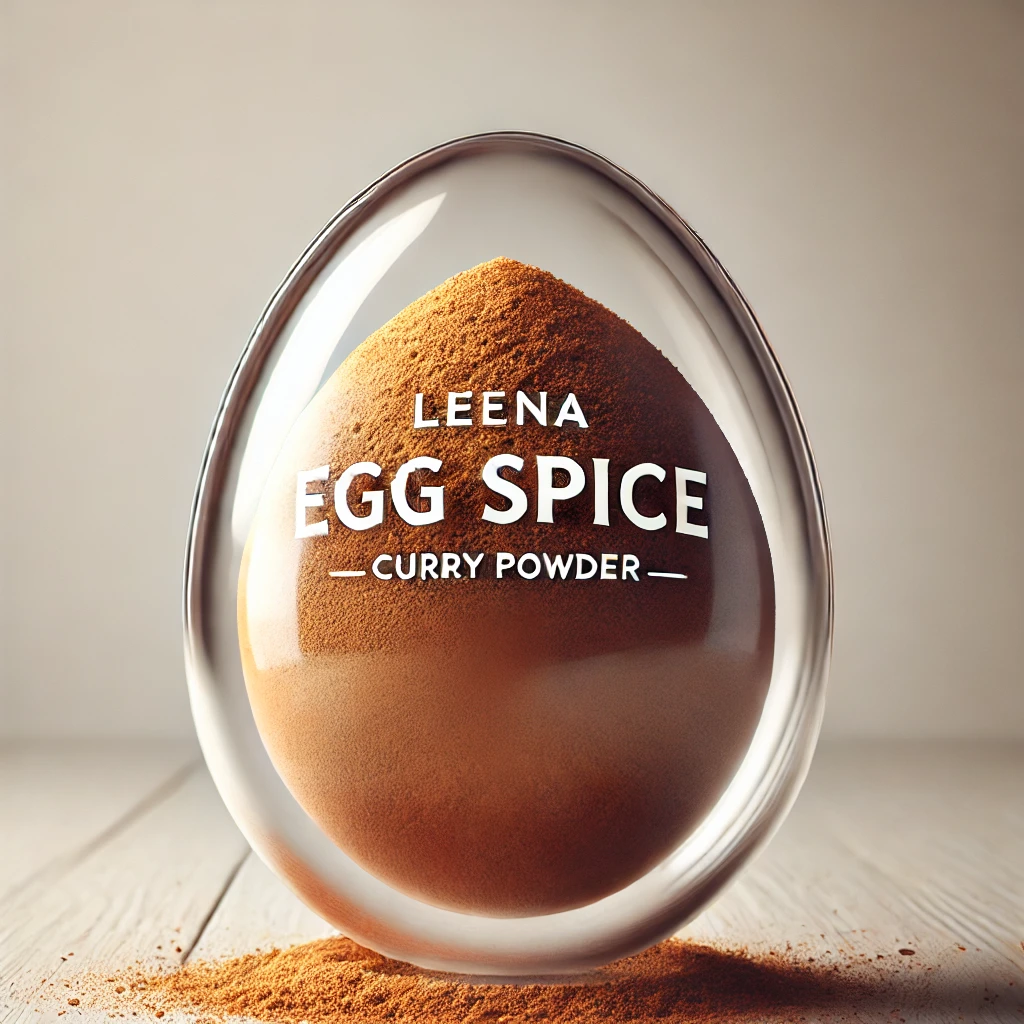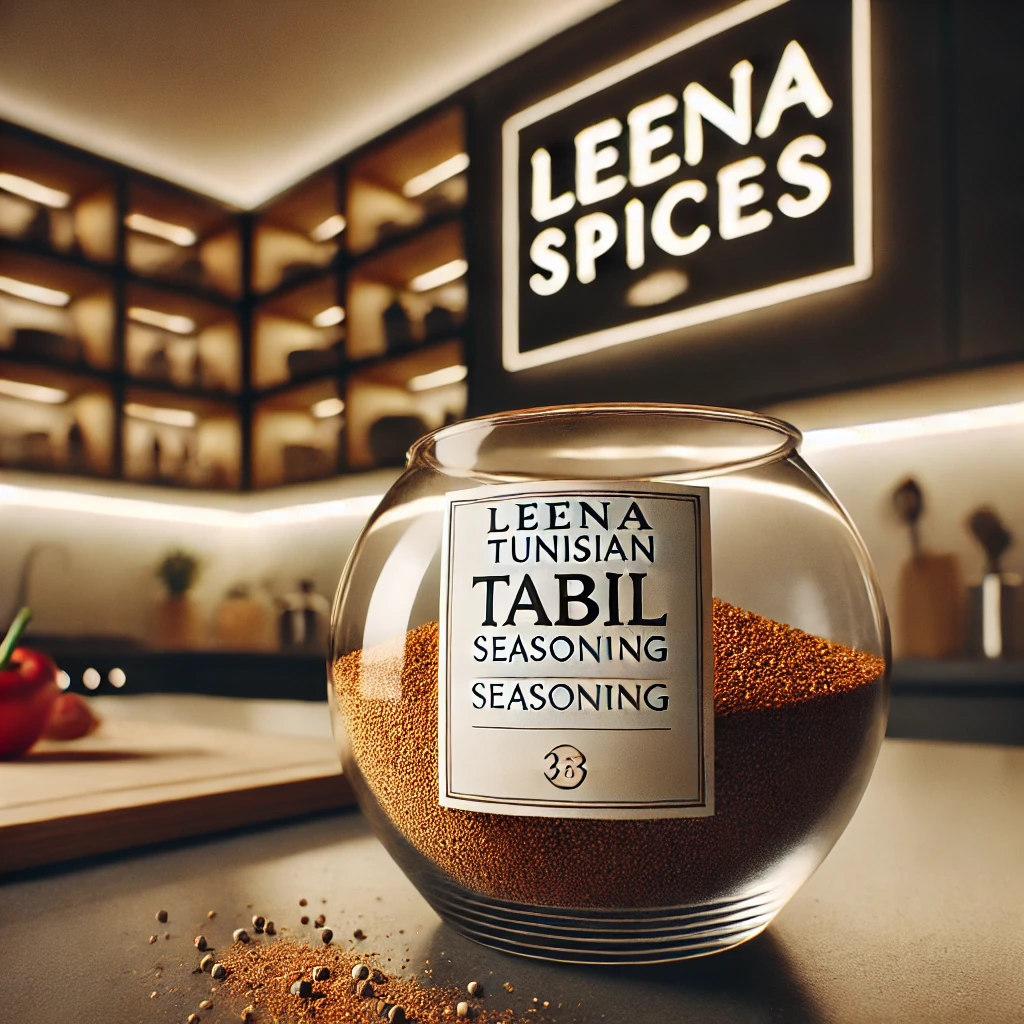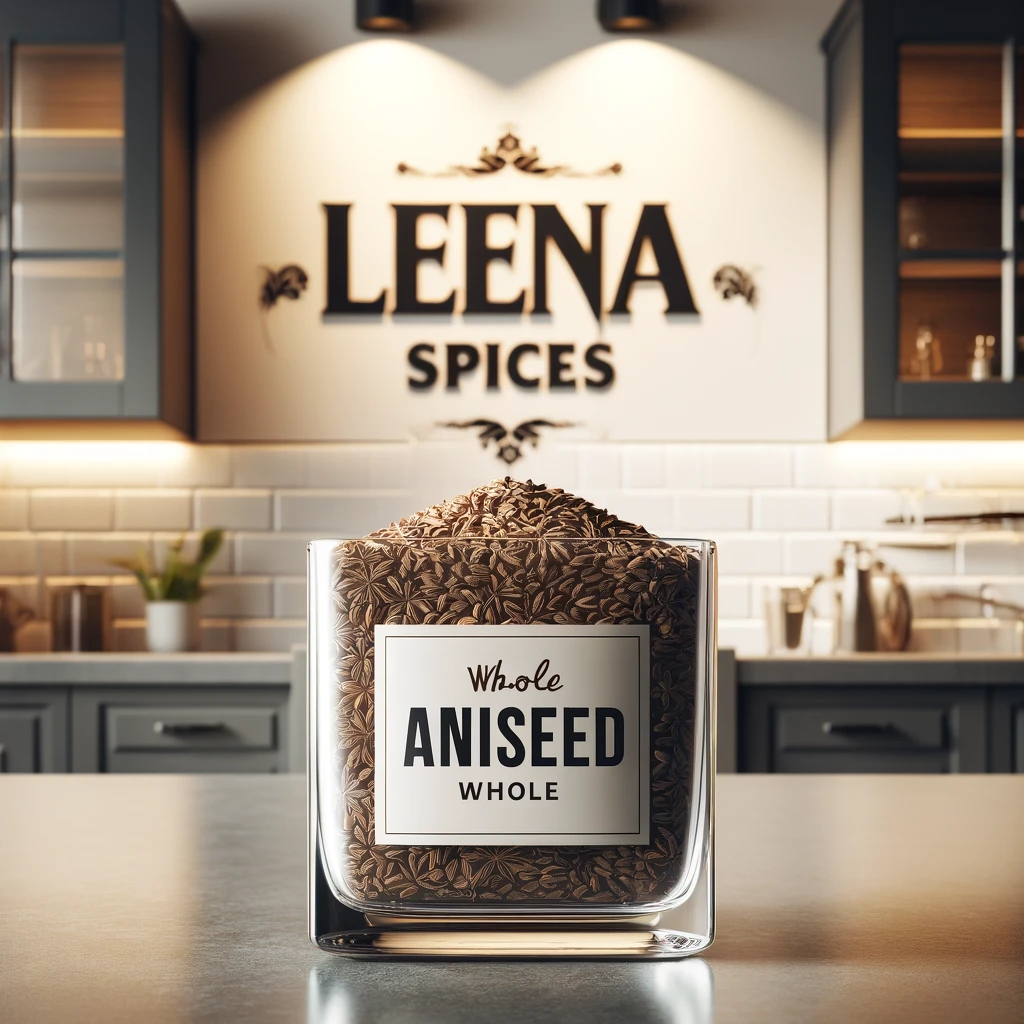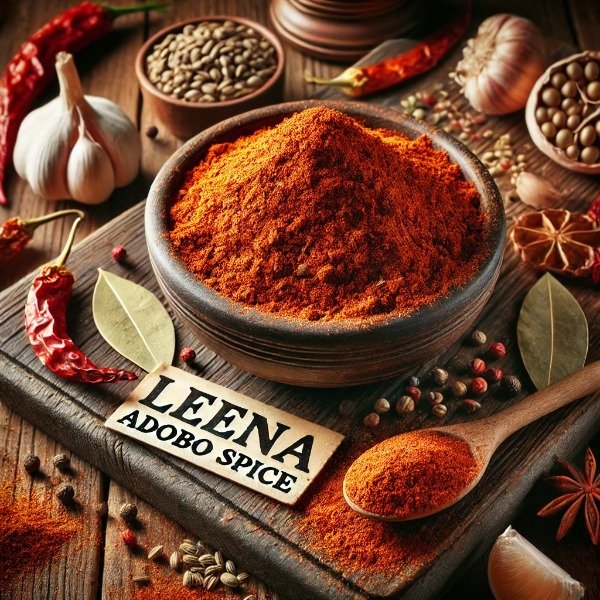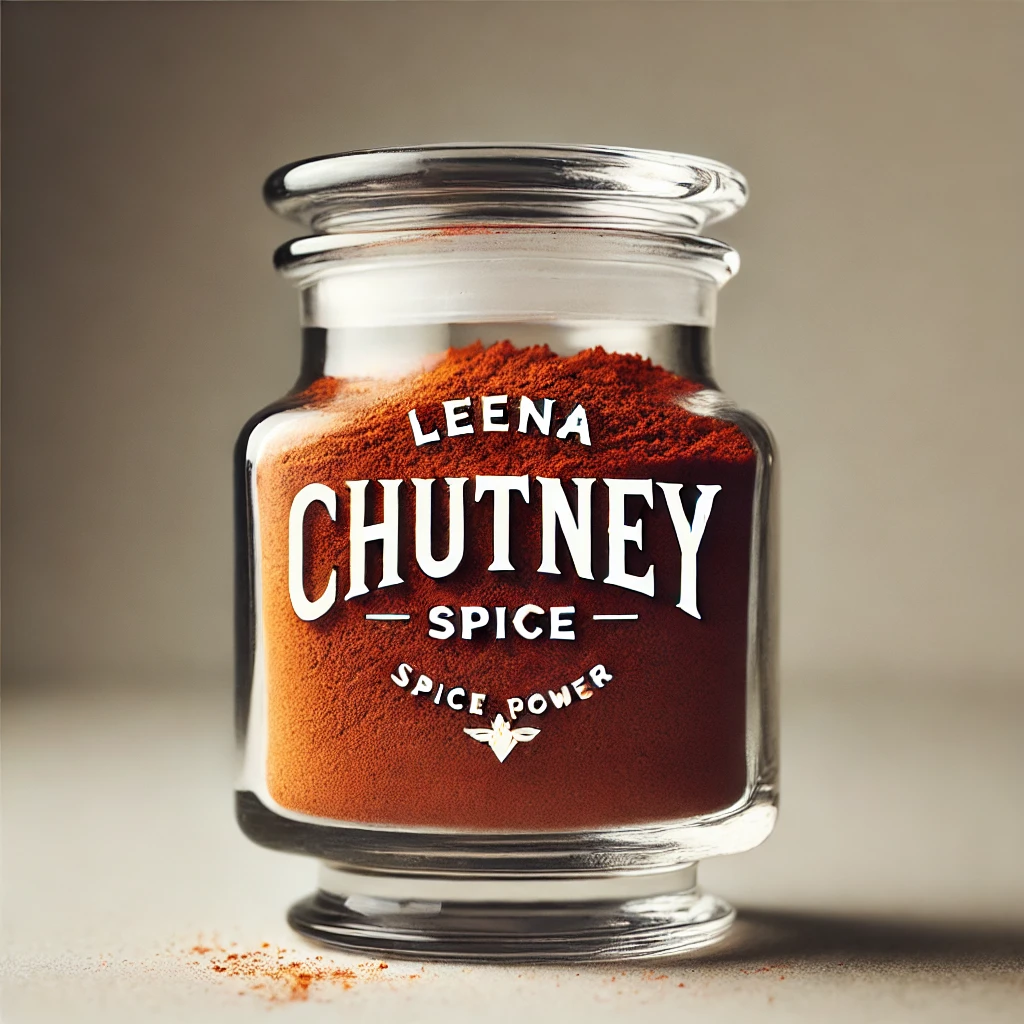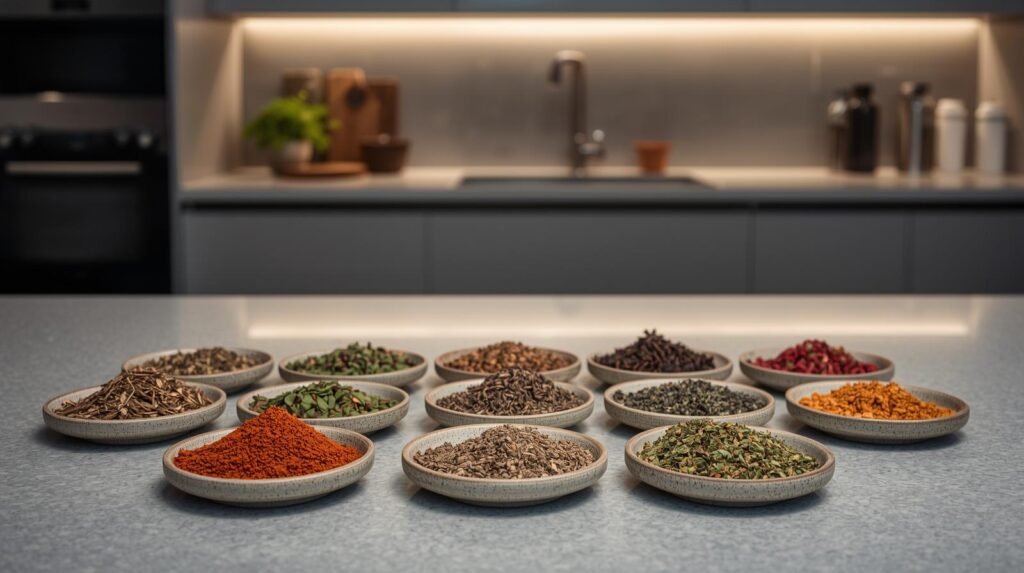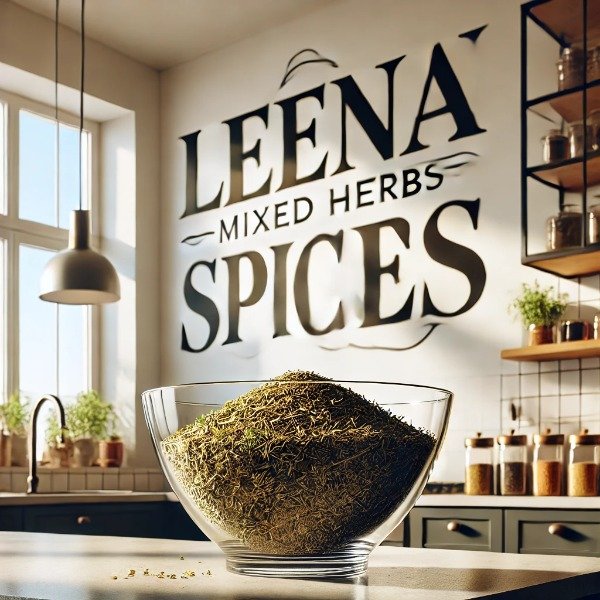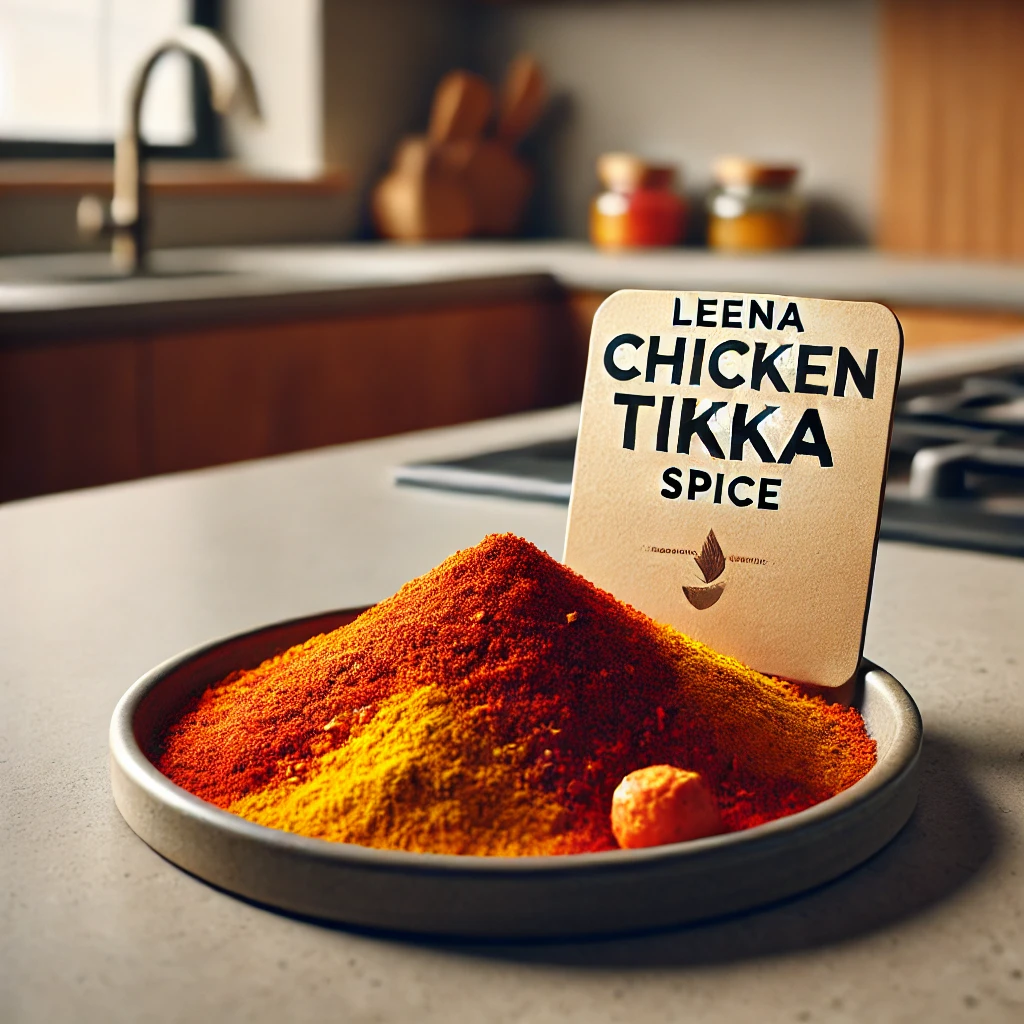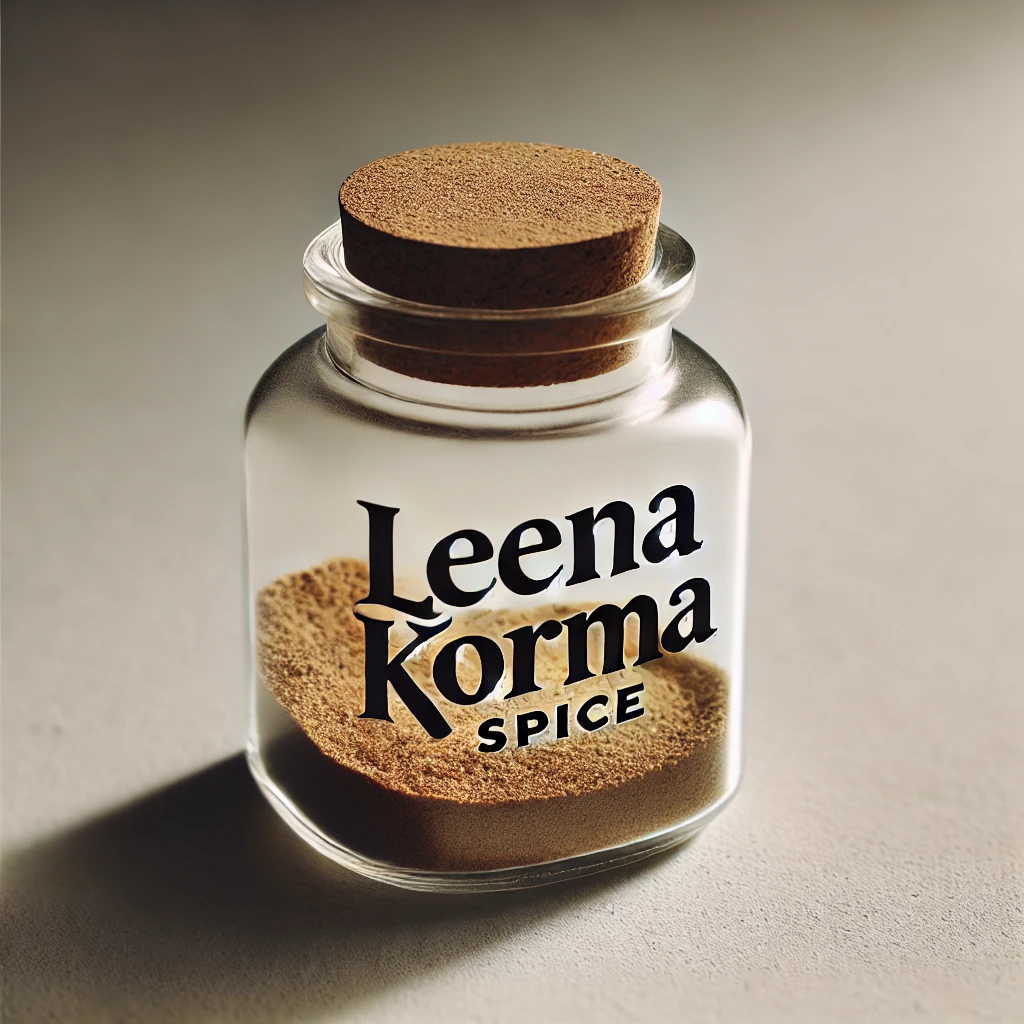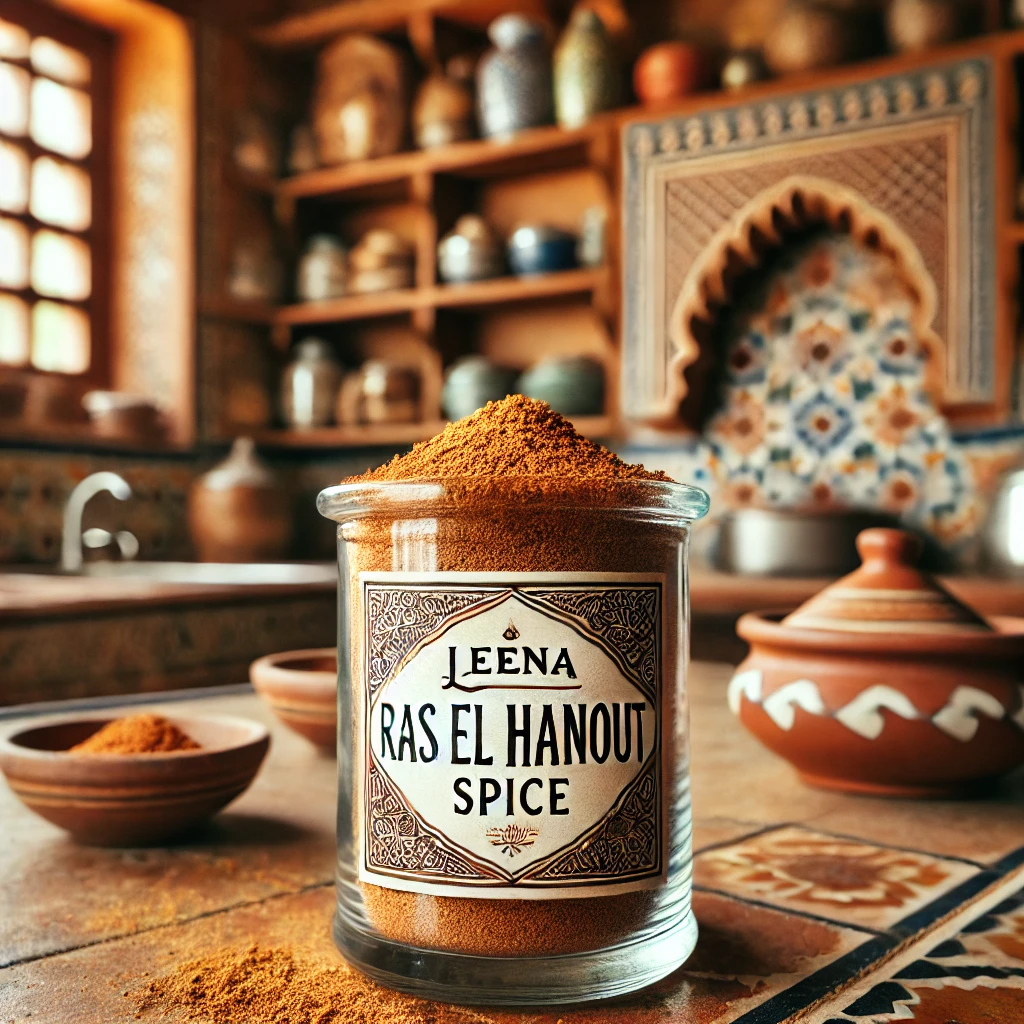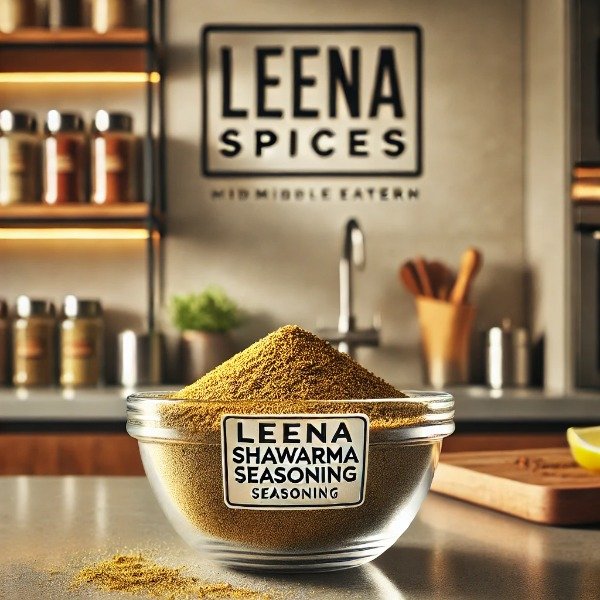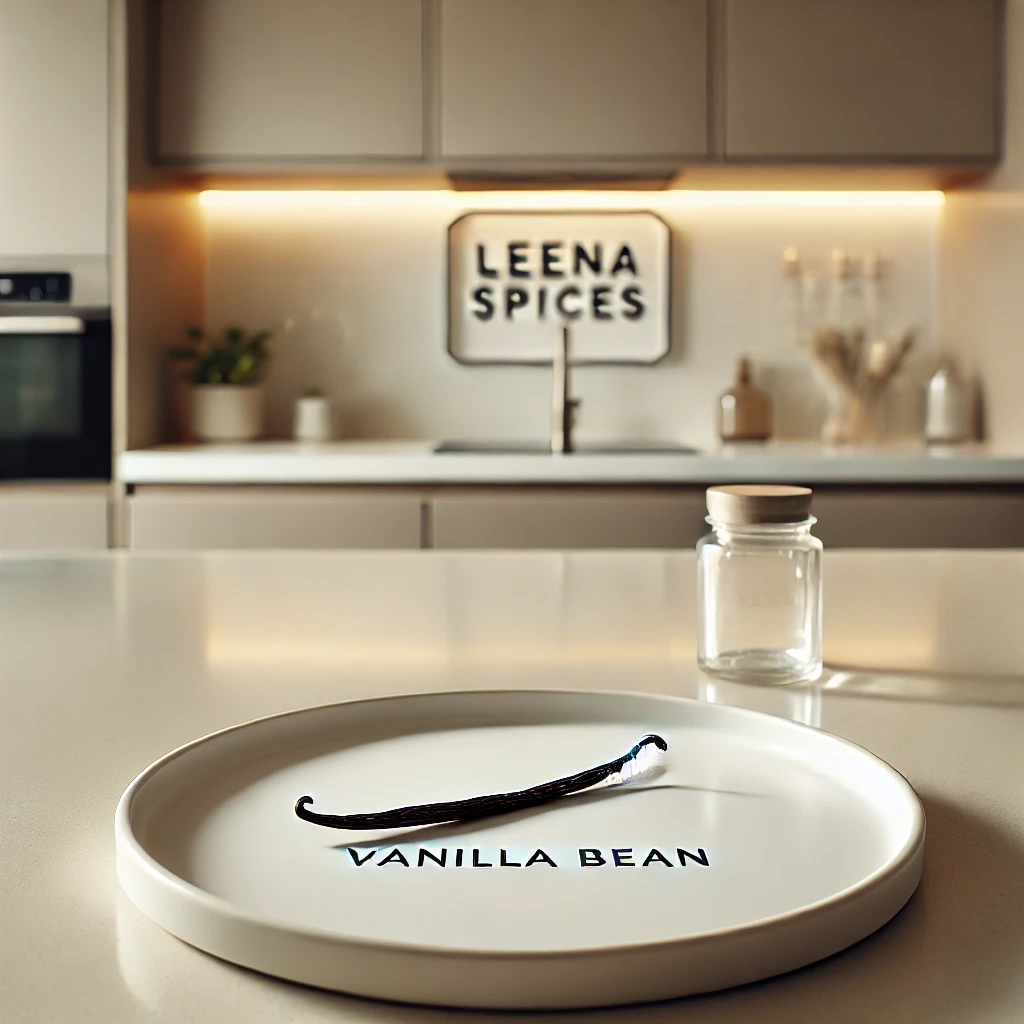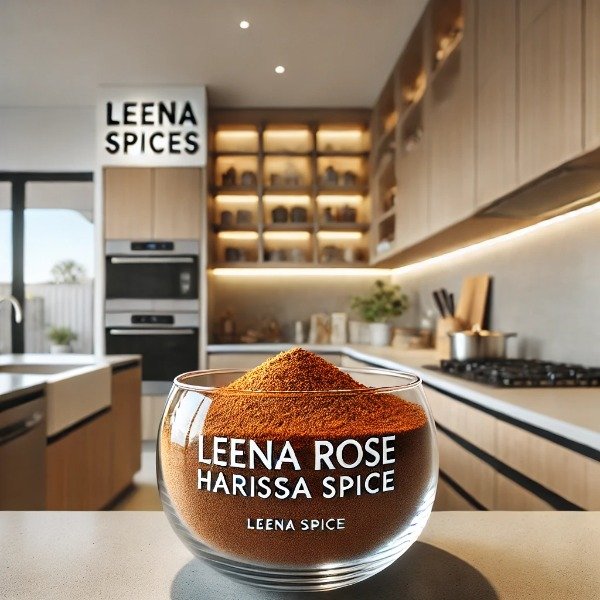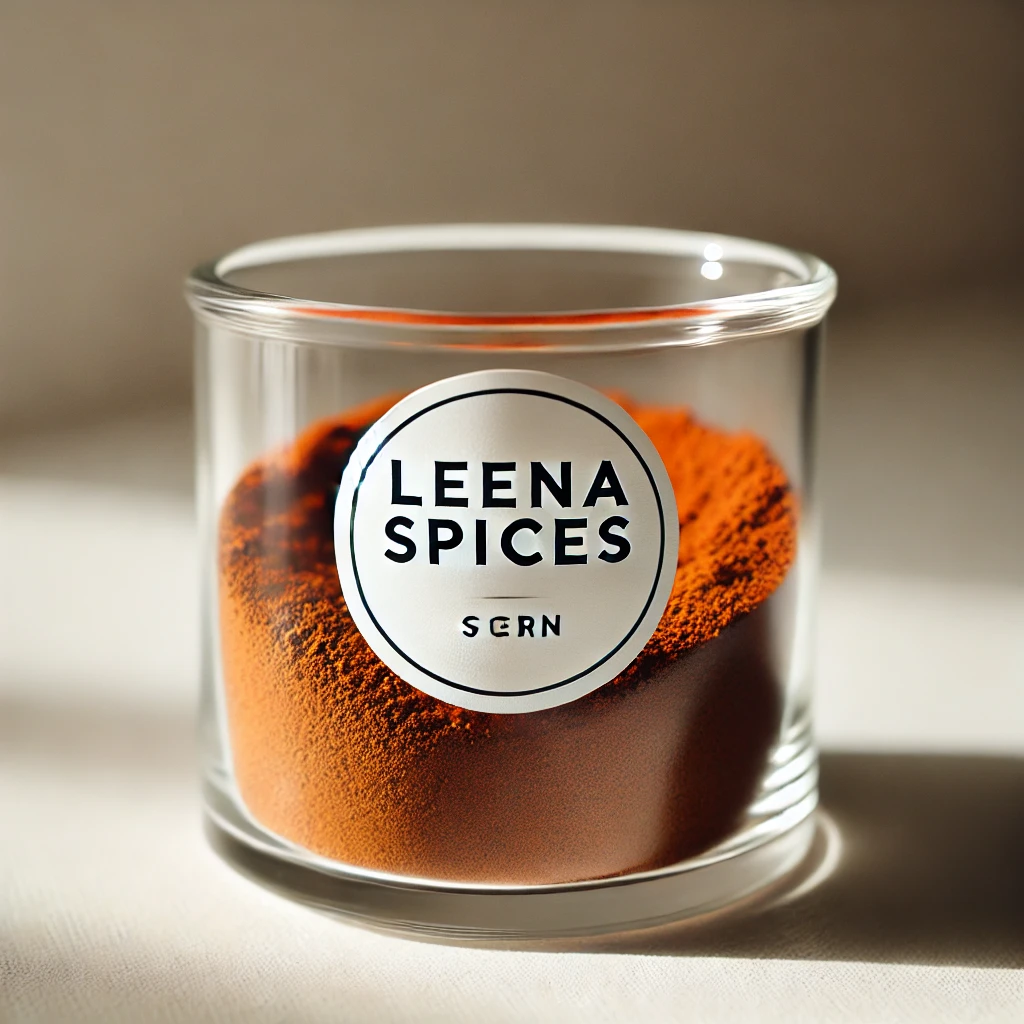10 Flavor-Packed Tips of Using Butter Chicken Spice Blend at Home
Table of Contents
- Butter Chicken spice blend: The secret behind the classic dish
- Key takeaways
- How can I make my own butter chicken spice blend
- What are key spices in a traditional butter chicken blend
- Butter chicken recipe
- Tips for best tasting butter chicken
- FAQs
- Conclusion
Butter Chicken Spice Blend: The Secret Behind the Classic Dish
Butter chicken, also known as murgh makhani, is one of the most cherished dishes in Indian cuisine. Famous for its velvety tomato-based sauce, rich buttery finish, and perfectly balanced spices, this dish was first created in Delhi and has since won hearts across the globe.
While butter and cream add to its signature richness, the true depth of flavor comes from the spices. A well-balanced murgh Makhani spices blend is what transforms simple chicken into a dish layered with warmth, aroma, and complexity.
Using a butter chicken spice mix takes the guesswork out of recreating this restaurant favorite at home. It ensures the right balance of heat, sweetness, and earthiness allowing anyone, from a beginner cook to a seasoned chef, to prepare an authentic and satisfying curry with ease.
Whether you want to master the traditional version or explore creative twists, a quality butter chicken spice blend is the key ingredient that makes the difference between an ordinary curry and a memorable one.
Key Takeaways
What makes butter chicken so special?
Its rich, creamy sauce combined with a balanced, aromatic spice blend creates a comforting and indulgent flavor.
Why use a homemade spice blend?
Homemade blends offer fresher, more vibrant flavors, complete control over heat and ingredients, and the ability to customize to your taste.
Which chicken is best for butter chicken?
Boneless chicken thighs are ideal—they stay juicy, absorb flavors well, and remain tender during cooking.
Can this recipe be adapted for vegetarians or vegans?
Yes! Substitute chicken with tofu, chickpeas, or vegetables, and use coconut or plant-based cream and butter alternatives.
What’s the secret to restaurant-quality flavor at home?
Blooming the spices in butter or ghee, marinating properly, and simmering the sauce slowly ensures depth, richness, and authentic taste.
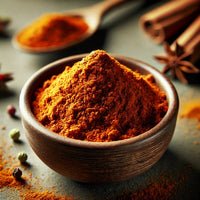
How can I make my own homemade butter chicken spice blend mix at home?
What Are the Key Spices in a Traditional Classic Butter Chicken Blend?
The soul of butter chicken lies in its carefully balanced spice mix. Each ingredient plays a role in creating the dish’s signature warmth, aroma, and depth of flavor. Here are the core spices that typically make up a traditional butter chicken blend:
- Bay Leaf (3g) – Adds a subtle, earthy fragrance that builds the base of the curry.
- Black Pepper (1g) – Provides a gentle heat and sharp undertone.
- Black Cardamom (3g) – Brings a smoky, bold flavor that adds depth.
- Green Cardamom (3g) – Offers a sweet, floral note that lightens the blend.
- Cinnamon (6g) – Contributes a warm, slightly sweet spice that balances savory flavors.
- Cloves (6g) – Intensely aromatic, with a pungent, warming character.
- Coriander Seeds (24g) – Mild, citrusy, and earthy—forming the backbone of many Indian spice mixes.
- Cumin Seeds (16g) – Nutty and earthy, adding richness and warmth.
- Fenugreek Leaves (2g) – Imparts the signature slightly bitter, maple-like flavor unique to butter chicken.
- Garlic Powder (6g) – Enhances savory depth and blends smoothly into sauces.
- Ginger Powder (6g) – Adds warmth and a mild spiciness.
- Mace (1g) – Lends a delicate, nutty aroma with hints of sweetness.
- Nutmeg (3g) – Provides a sweet, warm, and slightly woody undertone.
- Smoked Paprika (16g) – Brings smoky depth and a rich red color.
- Turmeric (4g) – Adds earthiness and the signature golden hue to the curry.
Method
The soul of butter chicken lies in its carefully balanced spice mix. Once you’ve gathered the core ingredients, here’s how to turn them into a fragrant, ready-to-use blend:
- Toast the Whole Spices
In a dry pan over medium heat, lightly toast the bay leaf, black pepper, black cardamom, green cardamom, cinnamon, cloves, coriander seeds, and cumin seeds for 1–2 minutes. Stir continuously until fragrant. This step releases essential oils and intensifies flavor. - Cool Completely
Transfer the toasted spices to a plate and let them cool to room temperature. Grinding warm spices can make them clump and lose aroma. - Grind to a Fine Powder
Use a spice grinder, coffee grinder, or high-powered blender to grind the cooled whole spices into a smooth powder. - Add Ground Spices
Mix in the fenugreek leaves (crushed between your palms), garlic powder, ginger powder, mace, nutmeg, smoked paprika, and turmeric. Stir well to combine evenly. - Store Properly
Transfer the blend to an airtight glass jar. Store in a cool, dark place for up to 6 months. Always use a dry spoon to keep the blend fresh and aromatic.
Tip: For maximum freshness, grind in small batches and make just enough for 1–2 months of cooking.
How to Use Butter Chicken Spice Blend in a Recipe?
Butter chicken is celebrated for its rich, creamy sauce and perfectly balanced spices, a dish that feels both comforting and indulgent. By using a homemade butter chicken spice blend, you can recreate the authentic flavors of an Indian restaurant right in your own kitchen.
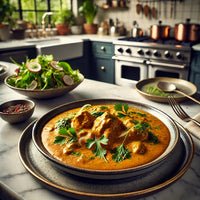
Ingredients
- 500g boneless chicken, cut into cubes
- 1 onion, finely chopped
- 1–2 tsp butter chicken masala
- 150g tomato paste
- 1 cup water
- 300ml cream, evaporated milk, or coconut cream
- 50g ground almonds and cashew nuts (optional, for richness)
- ¼ cup butter or margarine
- ¼ tsp honey
- ½ tsp cayenne pepper (adjust to taste)
- Salt, to taste
- Fresh coriander, for garnish
Method
- Heat the butter in a large frying pan over medium-high heat.
- Add the chicken pieces and cook for 10–15 minutes, until browned. Remove and set aside.
- In the same pan, add the chopped onions and sauté for 5–7 minutes, until golden.
- Return the chicken to the pan and stir for 2 minutes to coat with the onions.
- Add the butter chicken masala, salt, cayenne pepper, tomato paste, ground nuts (if using), and water. Mix well.
- Cover and simmer until the chicken is tender and cooked through.
- Stir in the cream, evaporated milk, or coconut cream. Continue cooking for 10 minutes, until the sauce thickens and becomes silky.
- Add the honey, mix gently, and finish with fresh coriander.
Serving Suggestion
Enjoy your butter chicken hot with steamed rice, naan, or warm pita bread.
Tips for the Best-Tasting Butter Chicken
1. Use High-Quality Spices
The flavor of butter chicken depends entirely on the quality of its spices. Fresh, aromatic ingredients can make the dish shine, while stale or poorly stored spices will leave it tasting flat and uninspired.- Why it matters: Spices are the heart of the blend. Their natural oils carry the fragrance and depth that give butter chicken its signature character.
- Practical tip: If you want convenience without compromising flavor, choose a trusted pre-balanced mix. If you prefer crafting your own, start with whole spices whenever possible and grind them fresh. Once prepared, store your blend in an airtight jar in a cool, dark place to preserve its potency for up to six months.
- Pro technique: For even greater aroma, lightly toast whole spices such as cumin or coriander seeds in a dry pan for about 30 seconds before grinding. This simple step intensifies their flavor and adds a layer of depth to your butter chicken.
2. Marinate for Maximum Flavor
Marination is one of the most important steps in making butter chicken. It not only tenderizes the meat but also allows the spices to deeply penetrate, creating layers of flavor in every bite.- Why it matters: The yogurt in the marinade gently breaks down proteins in the chicken, ensuring it cooks up juicy and tender. Combined with spices, this step builds the foundation of the dish’s rich taste.
- Practical tip: Use chicken thighs for the best results, as they stay moist during cooking. Marinate them in yogurt, about one tablespoon of your spice blend, and a pinch of salt. Let the mixture rest for at least one hour, though overnight is ideal for maximum depth.
- Pro technique: Add a squeeze of lemon juice to the marinade. Its bright acidity enhances the spices and introduces a subtle tang that balances the creaminess of the final sauce.
3. Bloom the Spices Properly
Blooming your spices is a crucial step in unlocking their full aroma and flavor. Cooking them in fat—whether butter or oil—releases their essential oils, creating a deeper, more complex taste in the sauce.- Why it matters: Simply adding spices directly to the dish won’t fully develop their potential. Blooming ensures each spice contributes its signature warmth, sweetness, or earthiness to the curry.
- Practical tip: After sautéing onions and ginger-garlic paste, add your butter chicken spice blend to the hot butter or oil. Stir continuously for 30–60 seconds over medium heat. Keep a close eye as spices can burn quickly, and burnt spices will turn bitter.
- Pro technique: Use a combination of butter and oil. The oil raises the smoke point, preventing the spices from burning, while the butter imparts that rich, classic buttery flavor characteristic of butter chicken.
4. Balance the Sauce’s Flavors
A great butter chicken sauce is all about harmony. It should be creamy, slightly sweet, and gently spiced, with no single ingredient dominating the palate.- Why it matters: Proper balance brings out the best in each component—tomatoes, cream, and spices—resulting in a rich, indulgent curry that’s satisfying but not overwhelming.
- Practical tip: Start with tomato puree for a smooth, vibrant base, then stir in cream or coconut cream to achieve that signature richness. A small pinch of sugar (around 1 teaspoon) helps neutralize the acidity of the tomatoes without making the sauce overtly sweet.
- Pro technique: For an extra layer of authenticity and luxury, incorporate 1–2 tablespoons of cashew paste or finely ground almonds. This adds a subtle nutty depth that elevates the sauce to a restaurant-quality finish.
5. Don’t Skip the Fenugreek (Kasuri Methi)
Dried fenugreek leaves, or kasuri methi, are a subtle but essential ingredient in authentic butter chicken. They contribute a unique, slightly bitter, nutty flavor that helps define the dish’s signature taste.- Why it matters: Even a small amount of fenugreek elevates the curry, balancing the richness of the cream and butter while adding a layer of aromatic complexity.
- Practical tip: Crush about 1 teaspoon of kasuri methi between your palms and sprinkle it into the sauce during the final simmer. This releases its aroma without overpowering the other flavors.
- Pro technique: If fenugreek isn’t available, a tiny drizzle of maple syrup (about ¼ teaspoon) can mimic its subtle sweetness. Use sparingly, as it’s only meant to hint at the flavor, not replace it entirely.
6. Cook Low and Slow for Depth
Slow cooking is key to developing the rich, layered flavors that make butter chicken truly memorable. Gentle simmering allows the spices, tomato base, and chicken to meld into a cohesive, restaurant-quality sauce.- Why it matters: Rushing the cooking process can result in a curry that tastes disjointed, with sharp or underdeveloped flavors. Low and slow simmering ensures every ingredient contributes harmoniously.
- Practical tip: After adding tomato puree and spices, let the sauce simmer on low heat for 10–15 minutes. Once the chicken and cream are incorporated, continue to simmer for an additional 5–7 minutes so the flavors fully integrate.
- Pro technique: For an extra-smooth, silky texture, blend the sauce briefly before adding the cream. This step is especially helpful if you prefer a velvety, professional-style finish.
7. Choose the Right Chicken
The type of chicken you use has a big impact on both texture and flavor absorption, which are crucial for a successful butter chicken.- Why it matters: Juicy, tender meat ensures the sauce clings well and that every bite is flavorful. Some cuts cook differently, affecting the final dish.
- Practical tip: Boneless chicken thighs are ideal as they remain moist during cooking and absorb the spice blend beautifully. Chicken breast can be used, but it tends to dry out if overcooked.
- Pro technique: For an extra layer of authenticity and flavor, grill or sear the marinated chicken pieces over high heat before adding them to the sauce. This creates a slight char that adds depth and richness to the curry.
8. Garnish Thoughtfully
Finishing touches elevate both the flavor and presentation of butter chicken, making it feel as special as a restaurant dish.- Why it matters: A garnish adds color, freshness, and an extra layer of flavor that complements the rich, creamy sauce.
- Practical tip: Sprinkle freshly chopped cilantro over the curry and drizzle a little cream just before serving to create an inviting, restaurant-style appearance.
- Pro technique: For an added touch of indulgence, place a small pat of butter on top right before serving. It melts into the sauce, enhancing richness and giving the curry a glossy, appealing finish.
9. Pair with the Perfect Sides
The right accompaniments can transform butter chicken from a simple meal into a complete, satisfying experience.- Why it matters: Proper sides complement the rich, creamy curry and help balance its flavors, ensuring every bite is enjoyable.
- Practical tip: Serve your butter chicken with fluffy basmati rice, warm naan, or soft roti to soak up the sauce. A side of cucumber raita adds a refreshing, cooling contrast to the spices.
- Pro technique: For extra flavor, brush naan with garlic butter and lightly toast it. This simple addition enhances the dish and pairs perfectly with the creamy, spiced sauce.
10. Taste and Adjust as You Go
Butter chicken is a dish that benefits from a final check of flavors before serving. Small adjustments ensure the curry perfectly suits your palate.- Why it matters: Everyone’s taste preferences differ, and seasoning can vary depending on the freshness of your ingredients. Tasting as you cook guarantees a balanced, flavorful result.
- Practical tip: Sample the sauce before serving. Adjust salt, spice (with extra chili powder if desired), or creaminess (by adding more cream or yogurt) to your liking.
- Pro technique: If the sauce feels too rich or heavy, add a splash of water or stock to lighten it without compromising flavor. This keeps the curry smooth and perfectly balanced.
Butter Chicken FAQs
Is butter chicken a spicy dish?
Traditionally, butter chicken is not very spicy. The heat comes mainly from chili powder, but the dish is celebrated for its creamy, rich, and mildly spiced flavor.
What’s the difference between butter chicken and chicken tikka masala?
Although they may look similar, the sauces differ. Butter chicken features a smooth, creamy, and slightly sweet tomato-based sauce, often enriched with butter and fenugreek. Chicken tikka masala tends to be richer, spicier, and more tomato-forward, with a bolder flavor profile.
Can I make this recipe vegetarian or vegan?
Yes! Butter chicken spice blend is vegan-friendly. Replace the chicken with firm tofu, chickpeas, or your favorite vegetables. For a vegan sauce, use coconut cream or another plant-based cream, and swap dairy butter for a plant-based alternative.
What makes butter chicken taste so good?
The secret lies in the spice blend. A careful combination of warm spices and fenugreek adds depth, while the creamy tomato-based sauce balances and enhances those flavors, creating the signature richness of the dish.
How should I store my spice blend?
Use a dry spoon when handling the blend and keep it in an airtight jar, away from sunlight and heat. Proper storage preserves freshness, aroma, and potency for months.
How do restaurant versions taste richer?
Professional kitchens often bloom their spice blends in hot ghee or butter before adding other ingredients. This step releases essential oils and intensifies the flavor.
Conclusion
Making butter chicken at home with a homemade spice blend is more than just cooking. It is an opportunity to explore authentic flavors, customize dishes to your taste, and elevate your culinary skills. From freshly ground spices to careful marination and thoughtful garnishes, each step adds depth, aroma, and richness that make the dish unforgettable. Whether you’re preparing a weeknight dinner, experimenting with new flavors, or sharing a homemade blend with friends, this classic Indian favorite becomes a personal, flavorful experience every time. By taking control of your ingredients and techniques, you can recreate restaurant-quality butter chicken in your own kitchen, delighting your taste buds and those of everyone you serve.
